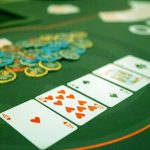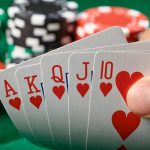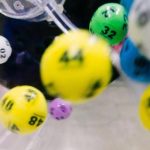Poker is more than just a card game; it’s also a mental game. You must learn to read your opponents’ moves, comprehend their thought processes, and foresee their next move if you want to be a successful poker player. The psychology of poker is used in this situation. You can improve your poker playing by solidly understanding psychology and human behaviour. You can learn about your opponents’ mental processes, hand strength, and even bluffing tendencies by studying their non-verbal cues, facial expressions, and body language. This blog post will offer some valuable advice to help you read your opponents like a pro and the psychology of poker.
Poker: The Value of Observation and Analysis
Critical abilities like observation and analysis can give you a significant advantage in poker games. If you want to win at poker, you must pay great attention to your opponents’ actions and habits. You can learn about someone’s hand strength, bluffing habits, and emotional state by analyzing their body language, facial expressions, and verbal cues. You can use this information to improve your chances of winning by making wise judgments regarding your gaming.
Additionally, by examining the actions and games of your rivals in the past, you can spot trends and modify your playstyle accordingly. For instance, you might utilize this information to your advantage by playing more cautiously against a particular opponent if you observe that they frequently play aggressively with poor cards. In general, every successful poker player must have essential abilities are observation and analysis.
Understanding Body Language and Non-Verbal Cues
Understanding poker psychology requires an understanding of non-verbal clues and body language. Players frequently reveal subtle cues and hint through nonverbal cues, including posture, facial expressions, and hand motions. For instance, a player who is tense or uneasy would fidget or avoid making eye contact, whereas a confident player might sit up straight and look their opponents in the eye. You can learn about your opponents’ cognitive processes, confidence levels, and even their hands’ strength by observing these non-verbal indicators.
It’s crucial to remember that not all non-verbal cues are accurate predictors of a player’s actions or hand power. Others may not be aware of their non-verbal behaviour, while some players may deliberately try to trick their opponents with misleading indications. To play poker effectively, it is crucial to use non-verbal cues and other methods of observation and analysis.
Recognizing the Various Player Types
Any serious poker player must possess the ability to recognize the various poker player types. Every player has a different playing style, and by recognizing these variations, you may modify your strategy to increase your chances of succeeding. The most prevalent types are the tight-passive, tight-aggressive, loose-passive, and loose-aggressive poker players. While loose players play more hands and take more chances, tight players often play fewer hands and are more conservative with their wagers.
While aggressive players are likelier to gamble frequently and with more outstanding bets, passive players typically bet less aggressively. You can modify your playing style to take advantage of other players’ weaknesses and reduce your risks by being familiar with the various sorts of players and their habits. For instance, if you’re playing against a tight player, you might try to bluff more frequently to capitalize on their conservative betting approach. In general, having a solid understanding of the various poker player types is a crucial ability that can improve your decision-making at the table and raise your odds of winning.
Bluffing and Deception as an Art
Use poker’s crucial elements of bluffing and deception to outsmart your opponents. Deception is deliberately misrepresenting your playing strategy or hand strength to your opponents. In contrast, bluffing convinces your opponents that you have a more substantial hand than you do. These tactics require talent, intuition, and close attention to your opponent’s actions and habits. They should, however, be taken cautiously and rarely because they can be dangerous.
The Function of Psychology and Emotions in Poker
Although it is frequently disregarded, poker players’ success at the table can be significantly influenced by their emotions and psychological makeup. Players must develop emotional control and mental clarity to make logical decisions and steer clear of blunders. For instance, a player may place impulsive bets or play recklessly out of anger or fury, whereas a player may play too cautiously or fold too readily out of fear or anxiety.
Additionally, you can significantly improve your chances of winning by comprehending the psychology of your rivals. You can learn about a person’s mental process, emotional condition, and even hand strength by watching them and evaluating their playing style. Use this information to inform your choices and modify your playing strategy to increase your chances of winning. In general, understanding how emotions and psychology play a part in poker is a crucial ability that can aid players in making wiser choices and ultimately winning at the table.
Techniques for Analyzing and Predicting the Moves of Your Rival
In poker, reading and anticipating your opponent’s moves is a crucial skill that can improve your decision-making and raise your chances of winning. One method is paying attention to your opponents’ betting patterns, body language, and verbal hints.
Additionally, understanding the playing style of your rivals will help you understand their mentality and hand strength. You can better understand your opponent’s intentions and make more precise predictions about their moves by combining these observation and analytic skills. However, as they can be readily misread and result in expensive blunders, it’s crucial to utilize these tactics prudence and not rely too mainly on assumptions.
Avoid these Common Mistakes When Reading Your Opponents
Although reading your opponents is a crucial poker ability, it is also simple to make mistakes that could cost you the game. One standard error is depending too much on non-verbal clues like body language, which can be deceiving or misunderstood. To better understand your opponent’s motivations, it’s crucial to employ a variety of sources of data, such as betting patterns and prior behaviour. Another error is making judgments based on a short sample amount of hands rather than researching your opponent’s long-term playing strategy.
Furthermore, when reading your opponents, it’s critical to maintain objectivity and refrain from letting your feelings influence your decision-making. Finally, be cautious when making predictions based on insufficient knowledge and watch out for opponents who deliberately attempt to mislead or fool you. By staying away from these frequent blunders, you may increase your ability to read your opponents and make more informed judgments at the poker table.
Conclusion
In addition to having a solid hand, playing poker well requires an awareness of your opponents’ motivations and tendencies. Players can significantly improve their position at the table and raise their chances of winning by becoming experts at observation, analysis, and prediction. However, it’s crucial to approach these talents cautiously and avoid frequently made blunders that can result in expensive errors. Poker is a challenging and dynamic game that mixes skill, strategy, and emotional restraint. Players can improve their skills and have lasting success in poker by concentrating on acquiring these critical traits.






























